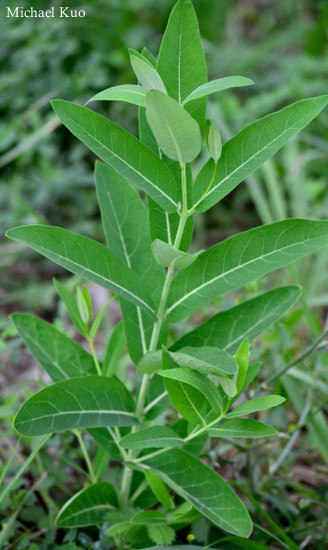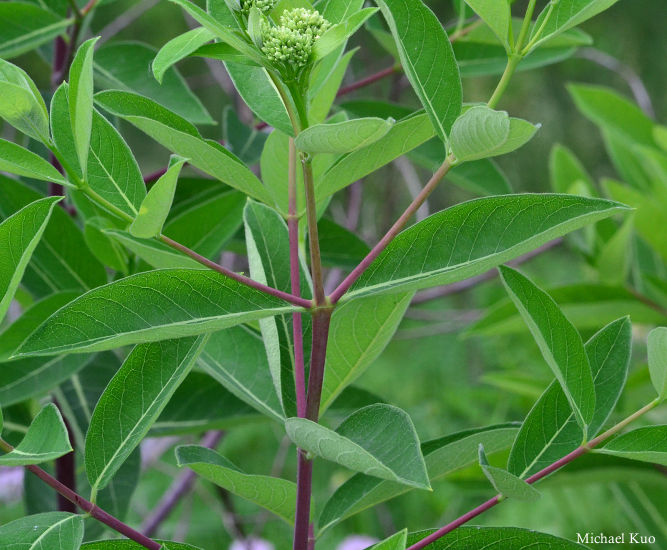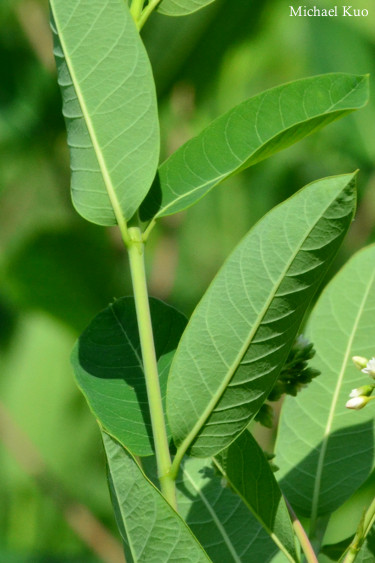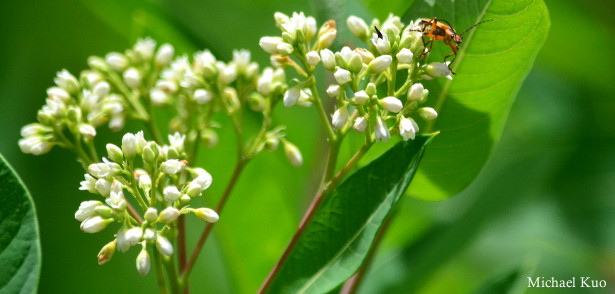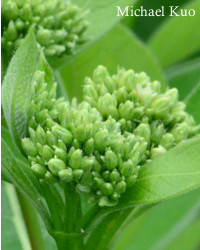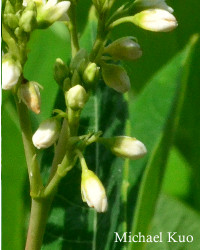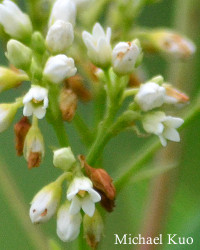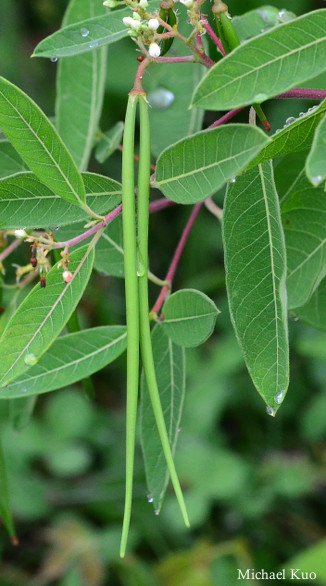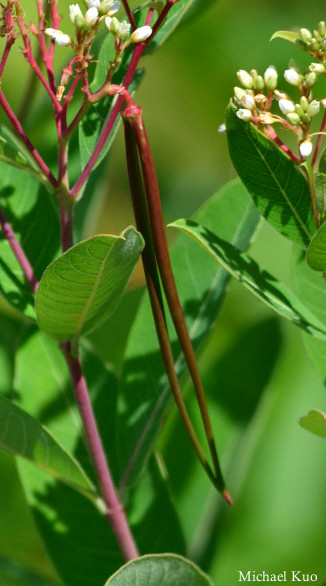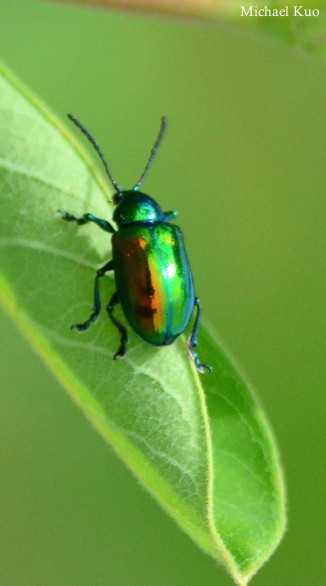 Apocynum cannabinum (dogbane) |

|
|
Before it flowers, Apocynum cannabinum is reminiscent of milkweeds in its stature and foliage, and in the fact that it contains a milky latex. But as the clusters of small, white flowers appear and, later, as the drooping bean-like seed pods develop, dogbane makes itself fairly easily recognized. The leaves are broadly elliptic, with pointed ends, rounded bases, and short to absent petioles. The upper surface is bald and medium green; the underleaf is paler green or slightly whitish. The edges are not toothed, and the leaves are arranged oppositely on the stem. The stem is bald and light green at first, becoming brownish red; as the plant grows it develops many branches. Flowers appear in rounded-topped clusters at the ends of branches. Individual flowers are quite small, and have 5 white petals arising from a light green base. before they have opened the flowers look like tiny whitish eggs sitting on greenish stands. Seed pods, reminiscent of green beans, develop after the flowers, reaching about 6–7 inches in length. The seedpods droop straight down, and become red to brown with age. The stature of dogbane is, at maturity, like that of a fairly tall bush; plants grow to 4 feet high or more. Young plants, however, are more or less unbranching. Habitat for dogbane is often in wet areas like ditches and lowlands, where stands of it can spread out quite far—but it also appears in dry habitats. |
|
|
|
|
|
|
|
|
|
|
|
|
|
Chrysochus auratus, the dogbane beetle, is easily recognized by its metallic green and bronze colors and its long, blue-black antennae. It associates with dogbane and with milkweeds (Asclepias spp.). References: Jones 1971, Bland & Jaques 1978, Arnett et al. 1980, Milne & Milne 1980, Jones 2005, Kershaw 2007, Voss & Reznicek 2012, Mohlenbrock 2014, Hilty 2017. Kuo, Michael & Melissa Kuo (July, 2017). Apocynum cannabinum (dogbane). Retrieved from the midwestnaturalist.com website: www.midwestnaturalist.com/apocynum_cannabinum.html All text and images © , midwestnaturalist.com. |

